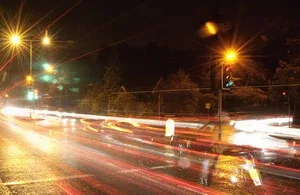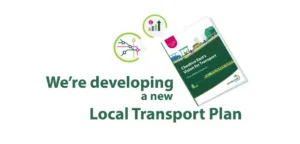Kent County Council has said it has several challenges to overcome including managing its highways through decline and minimising the risk of them becoming less resilient to new pressures.
The statement comes as part of its Emerging Local Transport Plan which is now out for public consultation.
Other challenges the council has include:
- Traffic is causing congestion, poor air quality and negatively impacting Kent’s economy.
- Transport challenges in Kent arise from how the existing population of 1.6 million people and 70,000
businesses in the county choose to travel as well as traffic generated by new developments being built. - Some indicators of public health, such as obesity and life expectancy, have been worsening.
- The financial viability of the public transport service has declined due to cost pressures and changes in
passenger demand. - Kent’s international gateways need government leadership – the impacts which arise and affect our
local communities and the national economy cannot be resolved entirely by ourselves. - Related to all the previous points, carbon dioxide (CO2
e) emission reductions from management and
use of the road network are forecast to remain at too high a level compared to the reduced levels
needed to contribute towards reducing the worst effects of climate change. - The council needs more funding and need to know what funding we will have over the next few years so we can improve transport in Kent.
The emerging plan sets out only the higher-level objectives, with the promise that detailed proposals will follow in a final plan after the results of the public consultation are known.
On its highways, it added:“The rate of highway asset deterioration has far exceeded the rate of investment. As a result, the value of the backlog of maintenance works needed for our managed road network has been increasing.”
Traffic congestion was causing both poor air quality and negatively impacting Kent’s economy, it said.
Some indicators of public health, such as obesity and life expectancy, had been worsening. It was thought that both would be improved by people walking, cycling or using public transport instead of cars, but the county said “the financial viability of the public transport service has declined due to cost pressures and changes in passenger demand”.
A disappointing recent trend had also been an increase in the number of fatal or serious injury accidents, after a decade of steady improvement.
More than 50 people were killed on Kent’s roads last year. In 2019, the figure had been 36.
Aside from the human tragedy, the council said: “The cost to Kent’s economy from the impacts arising from road collisions continues to provide a compelling need to act.
“The Department for Transport estimates that the value of the economic impact from severe and fatal road collisions in Kent in 2021 was £401 million.
“The scale of this cost demonstrates the challenge, but also the large opportunity for the improvement in wellbeing and quality of life for Kent’s residents and the economy that can arise from improving road safety.
“We want to improve the health, wellbeing and economic prosperity of lives in Kent by delivering a safe, reliable, efficient and affordable transport network across the county.”
The county said its aim to get to net zero carbon emissions by 2050 would be achieved by “getting effective dedicated infrastructure to electrify vehicles, increasing public transport use and making walking and cycling more attractive”.
But although estimated carbon emission from the transport network had been falling in recent years – thanks mainly to improvements in engine efficiency – there were pressures that might reverse that trend.
Money is the council’s biggest challenge. It said: “Funding levels have now fallen and at a time when costs have jumped upwards by a large amount.
“For example, the price of planned road resurfacing in 2023 has increased by 30% compared with 2022, so £25m in 2023 buys the equivalent of £17.5m of work in 2022.
“These price rises are affecting our day-to-day maintenance and our long-term capital programme with scheme costs rising – what works and schemes can be delivered will reduce if funding does not keep pace with price rises.
“Overall, this makes improving Kent’s transport networks more difficult to achieve.”
This will be KCC’s fifth Local Transport Plan. The last one, published in 2017, was supposed to run until 2031, but the government has required all highways authorities to update their plans with a focus on net zero carbon emissions.
KCC said that since 2017, £400m had been invested in improving the county’s roads, though only £29m of that came from the county council, the vast majority was from the government, with some from developers.
B

























